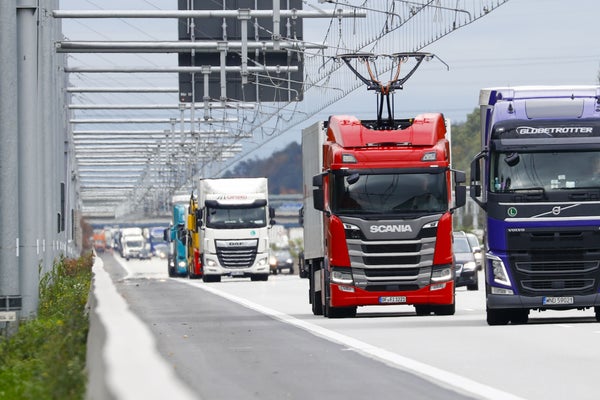Three Experiments Could Help Electrify Big Trucks
With a new EPA rule aiming to reduce carbon emissions from the biggest class of trucks in the U.S., companies are experimenting with overhead cables and wireless road charging
Overhead cable lines, wireless charging roads and battery swapping are three exploratory technologies to boost electrification of the trucking industry.
Alex Kraus/Bloomberg via Getty Images
CLIMATEWIRE | A climate rule for cargo trucks released by the Biden administration last week has put new pressure on makers of big rigs to cut their carbon pollution.
The industry might take cues from experiments that electrify semitrucks with overhead cables or wireless charging roads, or by swapping batteries at highway pit stops.
The EPA rule is expected to make about 17 percent of the biggest class of trucks in the U.S. carbon-free within eight years — a big test for vehicles that travel long distances with heavy loads.
On supporting science journalism
If you’re enjoying this article, consider supporting our award-winning journalism by subscribing. By purchasing a subscription you are helping to ensure the future of impactful stories about the discoveries and ideas shaping our world today.
“Electrifying trucks poses a much bigger challenge than replacing an internal combustion engine car with an electric car,” said Arjun Thangaraj Ramshankar, a Ph.D. student at the Georgia Institute of Technology who has studied the viability of using overhead cables for trucking.
Here are three experiments to watch as the freight industry undertakes a $1 trillion transition away from diesel fuel.
Overhead cables
Truck manufacturers could turn to a 140-year-old technology that has been used worldwide for city trams, passenger trains and public buses: overhead lines.
The so-called eHighway in Lübeck, Germany, and another pilot project near Los Angeles allow hybrid and electric trucks to suck power directly from the grid through…
Read the full article here







